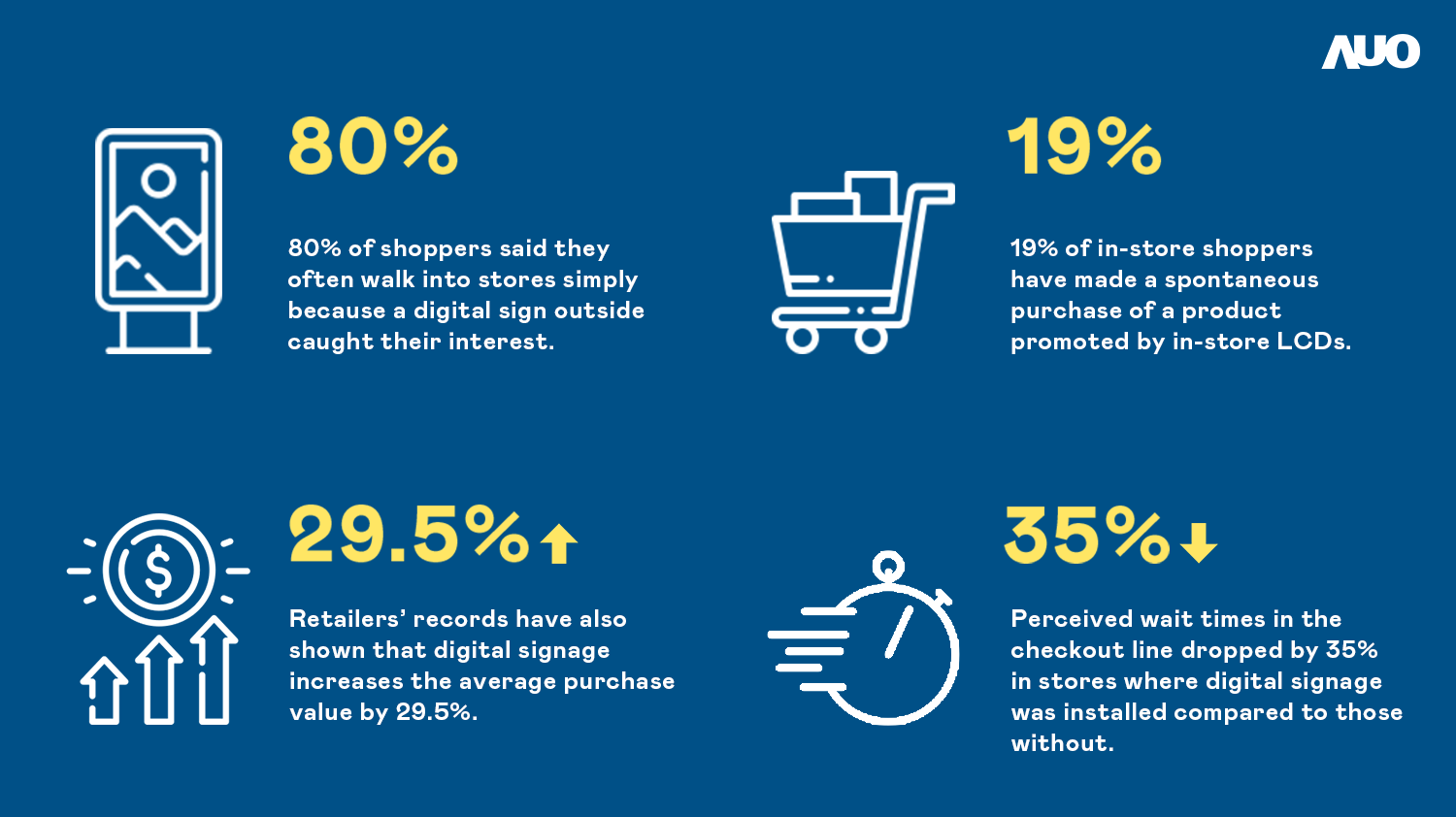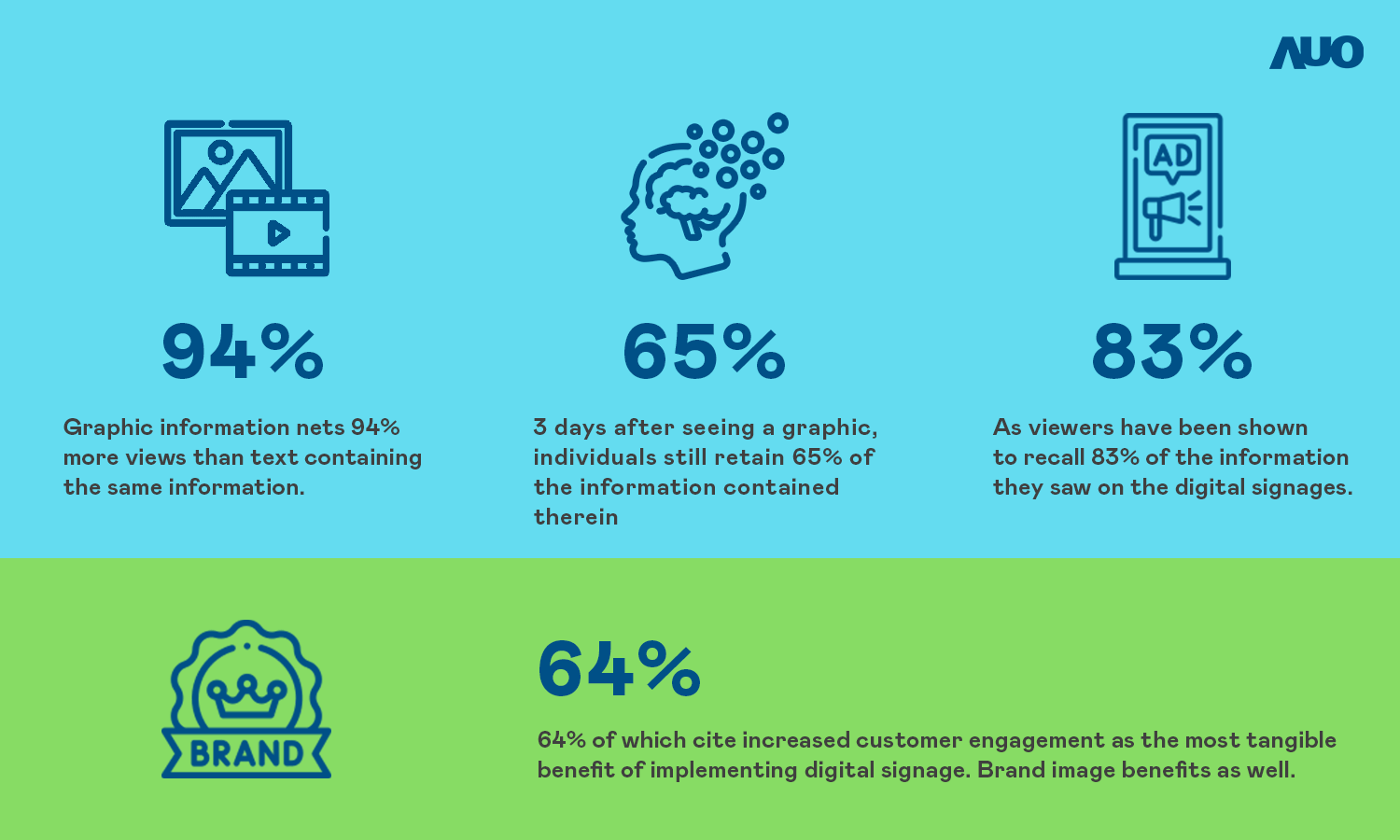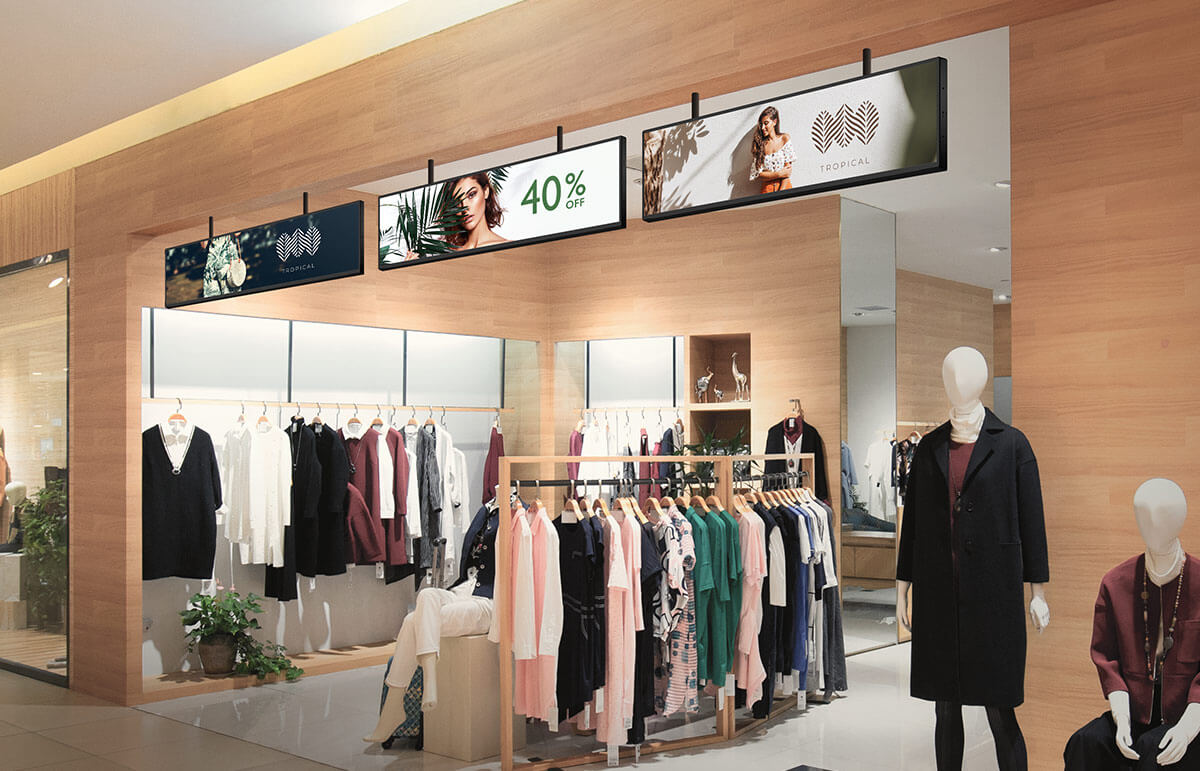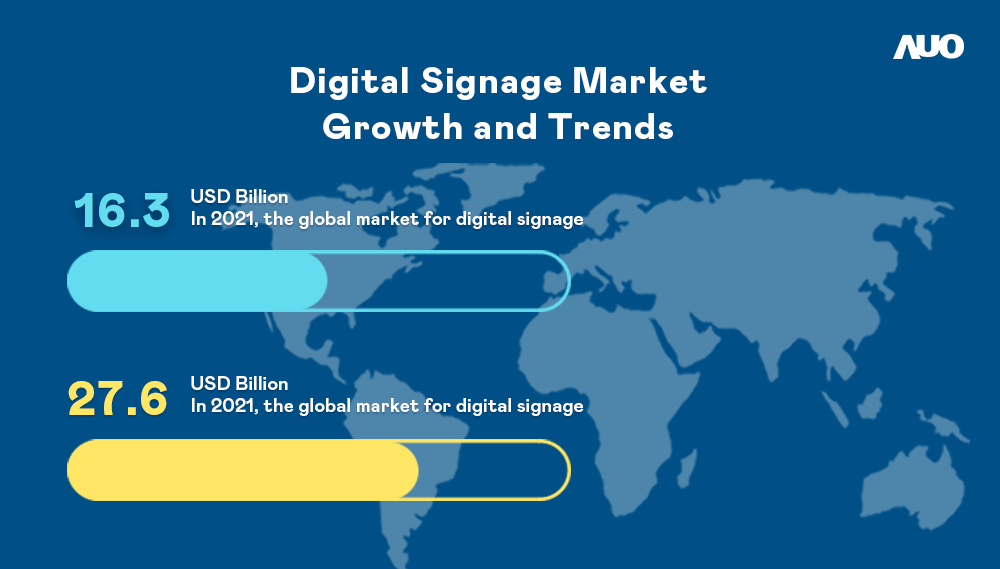How Employ Digital Signage to Improve Your Marketing Campaign

What is Digital Signage?
Digital signage, a segment of electronic signage, is a wide category of display devices, ranging from in-store LCD monitors to video walls, that are often used to share information with consumers. Digital signage appears in many different context and locales, including museums, sports venues, places of worship, schools, retail and corporate spaces, restaurants, and transport terminals. The applications of digital signage are vast and these days digital signs are used to promote products, present food menus, and advertise both indoors and outdoors.
Compared to traditional static signage, digital signage offers greater flexibility and novelty that can help storefronts stand out. Digital signage also offers many benefits over competing options, such as projection systems. Compared to projectors, digital signage is easier to install and capable of offering more interactivity. Moreover, digital signage offers greater brightness and contrast, especially in locales with ample ambient light. This makes digital signage especially suited for applications such as wayfinding in open areas with high foot traffic.
How does digital signage boost marketing efforts?
Attract customers and inspire greater purchasing
One major benefit of digital signage over older technologies is that, when applied appropriately, digital signs have the potential to be extremely alluring. In one survey, 80% of shoppers said they often walk into stores simply because a digital sign outside caught their interest. The benefits of digital signage continue once customers are inside, as 19% of in-store shoppers report having made a spontaneous purchase of a product promoted by in-store LCDs.
These survey results are in line with reports from businesses, which have found that sales rise by up to 80% after implementing digital signage. Retailers’ records have also shown that digital signage increases the average purchase value by 29.5%. Digital signage even helps keep customers occupied when they wait in line. Customer surveys showed that perceived wait times in the checkout line dropped by 35% in stores where digital signage was installed compared to those without.
Instill powerful visual memories
Research has shown that one of the most potent digital signage applications is to help shoppers recall your brand messages and products. Effective visuals attract a lot more eyeballs than staid text-based messaging. One study showed that graphic information nets 94% more views than text containing the same information. Furthermore, three days after seeing a graphic, individuals still retain 65% of the information contained therein. This effect is even more powerful when digital signage is involved, as viewers have been shown to recall 83% of the information they saw – nearly double the rate of traditional advertising.
These statistics are backed by the experiences of tech-savvy retailers, 64% of which cite increased customer engagement as the most tangible benefit of implementing digital signage. Brand image benefits as well: 84% of UK retailers feel that digital signage boosts brand awareness.
Real-Life Applications of Digital Signage
Examining real-life usage scenarios makes it readily apparent why digital signage is so effective. Consider digital menu boards. First of all, when implemented appropriately, they increase brightness and visibility of menu items. Digital menu boards also make it easy to cycle menu items, both seasonally and daily. The breakfast menu can transition to lunch and then to dinner based on a fixed scheduled or be adjusted manually. Digital menu boards also offer more opportunities for boosting brand awareness by making it easy to present visually attractive content to consumers.
Digital signage applications are not limited to menus. Because digital signage is available in a variety of specifications and sizes, it’s possible to install digital advertising and promotions nearly anywhere. Large digital signs with alluring visuals can lure customers into a store, and then medium-sized wayfinding signage can guide them around. Finally, notecard-sized flat panel displays installed on shelves can present shoppers with the information they need to know about products and help them feel that they’re making informed decisions about their purchases. Digital signage can also be integrated with other devices to provide greater functionality. For example, signage can be used to broadcast live streams, present visual analytics, scan cards or devices via RFID, or track the flow of people in a retail environment. The possibilities are truly endless.
Meeting Post-Pandemic Needs
During these uncertain times, the applications of digital signage have only continued to grow. Consider that with digital signage, the need for person-to-person contact is reduced, reducing the spread of viruses. Ordering kiosks can even be made touch-free, so that viruses can’t be spread by physical contact with the screen.
Signs can also be used to provide health information, such as reminders to wash hands, wear masks, and maintain proper social distancing. Also, erecting physical barriers or putting sufficient distance between digital kiosks, retailers can passively promote social distancing.
Growth and Trends
As retailers increasingly discover new digital signage applications, the market for these touchscreen panels continues to boom. In 2021, the global market for digital signage was valued at USD 16.3 billion. Over the next few years it’s expected to grow over 50%, to USD 27.6 billion in 2026. This growth will be driven by digital signage’s ever-growing commercial applications, infrastructure improvements in emerging markets, and rising demand for the higher-fidelity visuals offered by 4K and higher resolution.
As digital signage becomes more common, both consumers and retailers will emerge as winners. Consumers will have more access to information, allowing them to make better-informed purchasing decisions, while retailers will be able to create higher-quality content while expending less effort, all while attracting more customers into their retail spaces. If current trends continue, mass application of digital signage could very well prove to be the most important retail revolution of the 2020s.
How to Select a Digital Signage Solution
Key considerations
- How many screens do you want to install?
- What kind of content do you plan to display?
- What interactive features do you need?
- What size is your budget?
Further considerations
- What mounts and wiring will be required to install the signage?
- What kinds of media will you play, and what content management system will you use?
- Is your network suitable for delivering content to the signage?
- Do you have a local partner or vendor that could help you with installation?
If you’re unsure about the answers to these questions, the best first step is to reach out to a knowledgeable partner. Contact us today to learn more about the applications of digital signage in a business setting.





